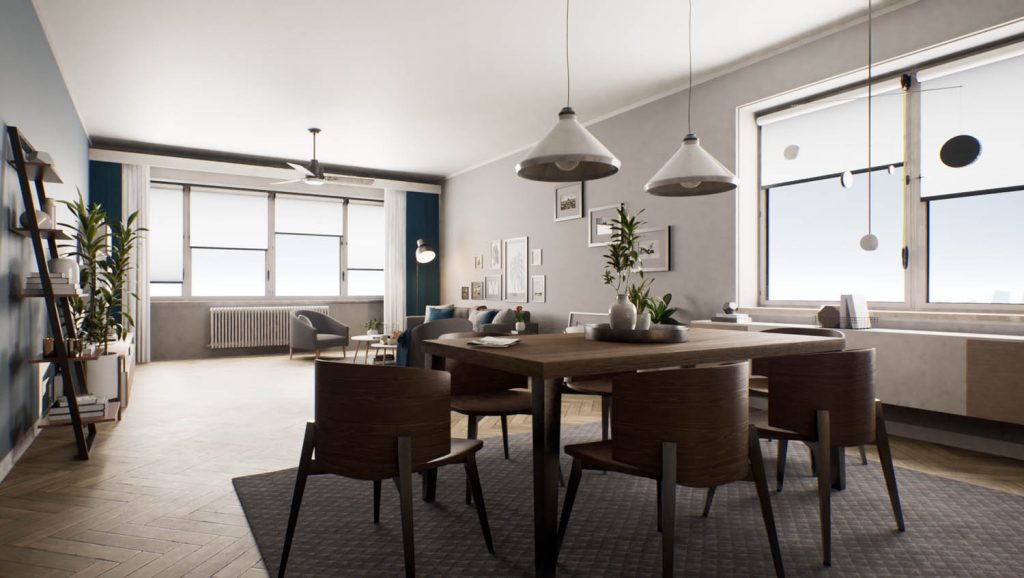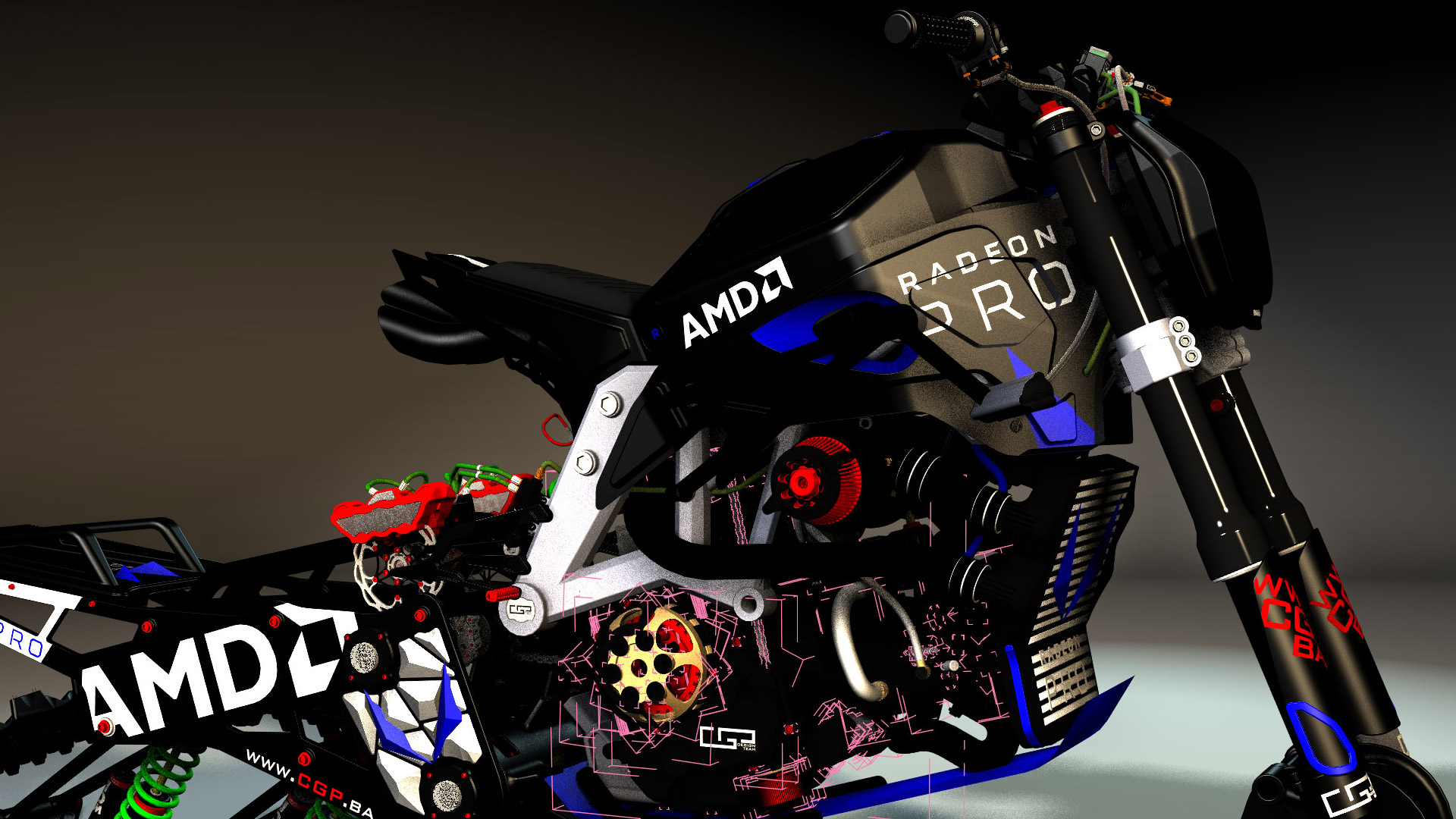In recent years AMD has allocated significant resources to the development of its Radeon Pro graphics drivers. The new 21.Q2 release promises to increase 3D performance by dynamically reducing viewport resolution, and without impacting the visual experience. Greg Corke tests out Radeon Pro Viewport Boost with the 32 GB Radeon Pro W6800 GPU.
Earlier this month AMD launched the AMD Radeon Pro W6800, a monster 32 GB professional GPU, which we review in-depth here.
Such a huge amount of on-board memory certainly makes the W6800 stand out from other GPUs in its class. However, the ‘RDNA 2’ workstation card also features a new pro graphics driver feature called Radeon Pro Viewport Boost, which is designed to reduce latency and boost viewport navigation performance.
Radeon Pro Viewport Boost will only work with AMD’s 21.Q2 enterprise driver. When the Radeon Pro W6800 launched earlier this month it had not yet been released, but that changes today.

The idea behind Radeon Pro Viewport Boost is simple but smart. It detects when a 3D model is moving quickly in the viewport, then dynamically drops the resolution to reduce the number of pixels the GPU needs to process. Then, as soon as that movement stops, it restores the full pixel count. According to AMD, this can increase Frames Per Second (FPS) dramatically without impacting the visual experience.
AMD Radeon Pro Viewport Boost currently works with Autodesk Revit 2021, Autodesk 3ds Max 2021, Twinmotion and Unreal Engine 4 (for packaged DirectX 11 projects only – not currently DirectX 12 or Unreal Engine Editor). Support for other applications is coming soon.
As one might expect, Radeon Pro Viewport Boost works best in GPU limited workflows. i.e. those where the GPU is being pushed to its limits and is the bottleneck in the workstation. And with this in mind, it should deliver the biggest benefits at higher resolutions (4K and above), with larger models and when visual quality settings are maxed out.
Testing Radeon Pro Viewport Boost
Radeon Pro Viewport Boost is enabled in the AMD Radeon Pro 21.Q2 driver under graphics settings. Users have control over the minimum dynamic resolution that the application viewport will drop down to, expressed as a percentage of its native resolution. It can be set between 50% and 83.3%. The lower the value, the bigger the potential performance boost.
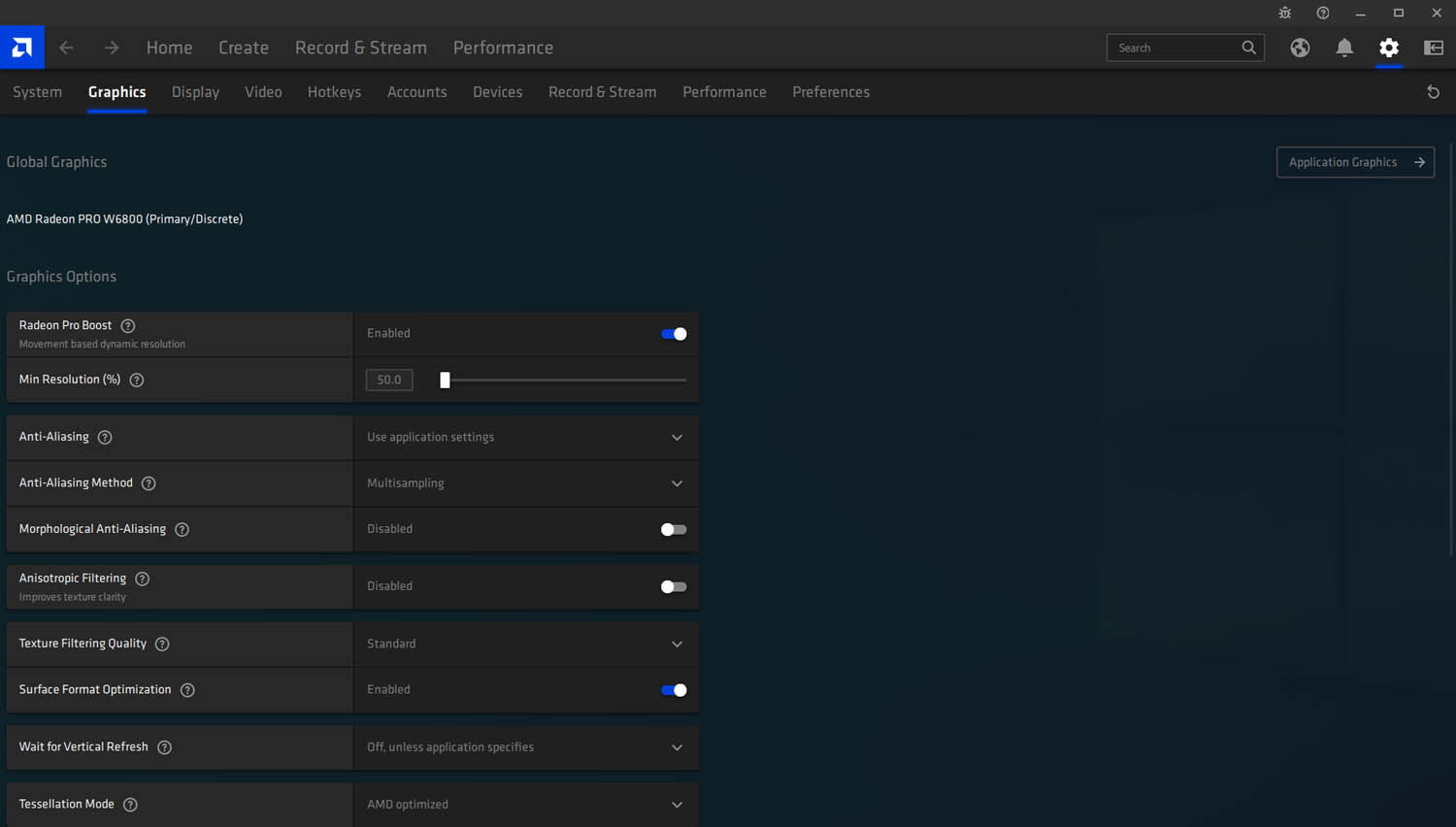
To show the extent to which it is working at any given moment, one to four small green dots appear in the top left corner of the viewport – one being the least, four being the most.
The smart thing about Radeon Pro Viewport Boost is that it only works when the model is in fast motion, when the eye is less sensitive to a loss of visual detail.
In both of our Unreal Engine arch viz interior scenes, for example, it only kicked in when ‘running’ (shift, up arrow) and not when ‘walking’ (up arrow only). At 50%, the drop in resolution is clearly visible but only really when you actively look out for it. At 83.3% it was very hard to see any difference.


When modelling in Revit or 3ds max, lines become more pixelated. But with the speed with which one tends to pan, rotate, or zoom-in, to quickly shift focus to a different part of the model, it’s really not detrimental to the overall experience. We tested on a standard 4K 60Hz IPS panel. There may be a bigger discernible difference on higher spec displays.
The performance-benefits can be huge. In Unreal Engine, testing with this Paris interior scene from arch viz artist Benoit Derau, we saw frame rates more than double (116%) when minimum resolution was set to 50%. In Unreal Engine’s freely available Arch viz interior scene packaged as a DirectX11 project it increased by 59%.
In Twinmotion the boost was around 30% with the ‘materials room’ demo scene when visual settings were set to ‘ultra’. In 3ds max we saw around a 20% improvement with AMD’s ‘snow bike’ model with high anti-aliasing and “High Quality” shading.
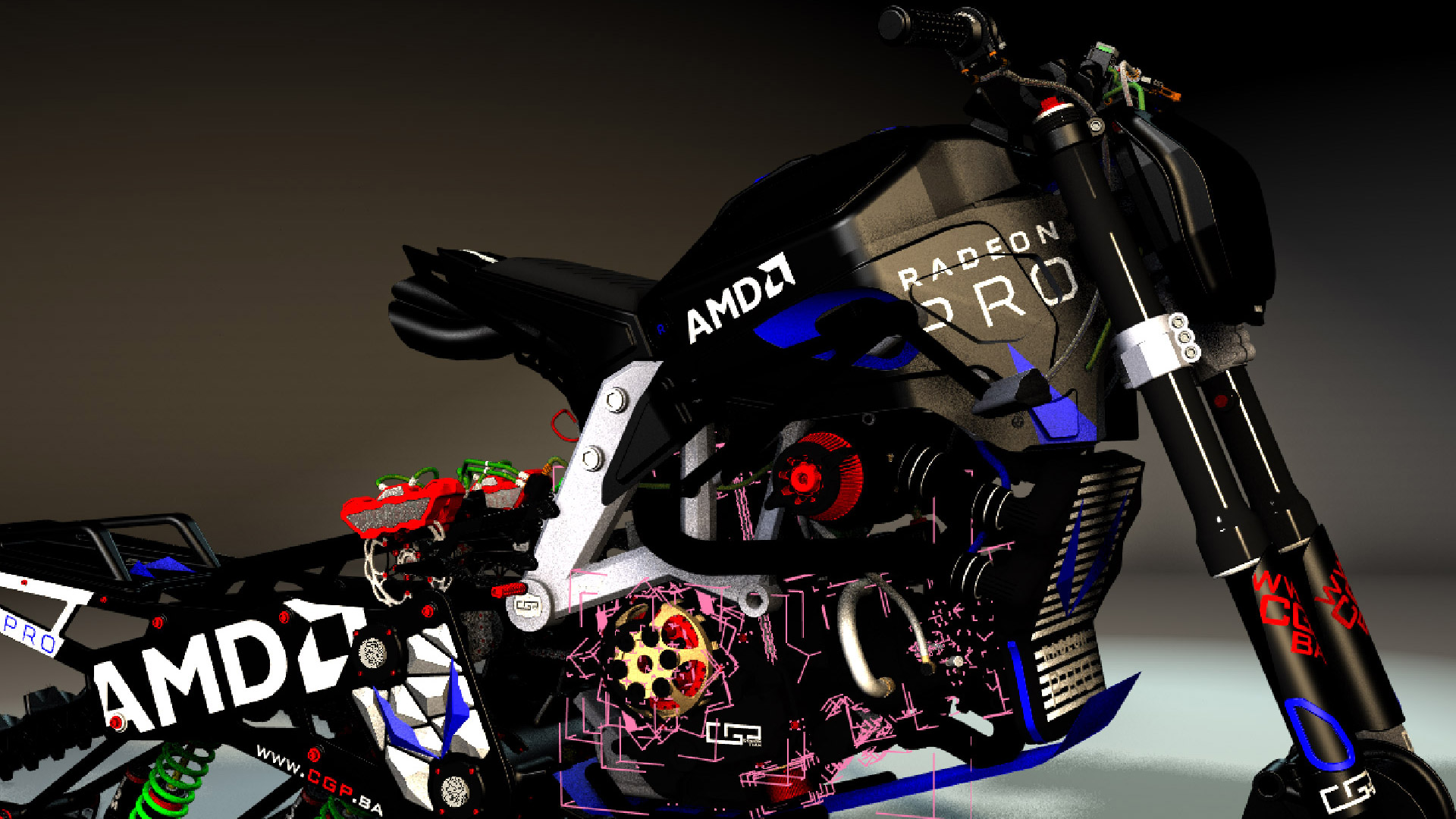
What about CAD/BIM?
For design viz applications like Unreal Engine and Twinmotion having the highest quality graphics is always the ultimate goal. However, in 3D CAD and BIM modelling workflows it’s usually less important, with the focus instead on the clear representation of geometry.
With this in mind, the benefits of Radeon Pro Viewport Boost in CAD/BIM applications like Revit are less clear.
In Revit, the most popular way to view BIM models is in ‘shaded’ mode. However, with this display style enabled we saw no benefit to Radeon Pro Viewport Boost. As with many CAD/BIM tools, the GPU simply isn’t stressed enough, so the CPU becomes the bottleneck instead.
It’s only when you start ramping up the quality settings that more demands are placed on the GPU and Radeon Pro Viewport Boost can come into effect. And while the performance increases can be large, we only found a few select scenarios where a substantial benefit could be seen.
We tested with four relatively small Revit models and found that if the following criteria were met – realistic display style, smooth lines with anti-aliasing, transparency enabled, and viewport set to perspective mode – then there was a huge performance gain; almost double the Frames Per Second.
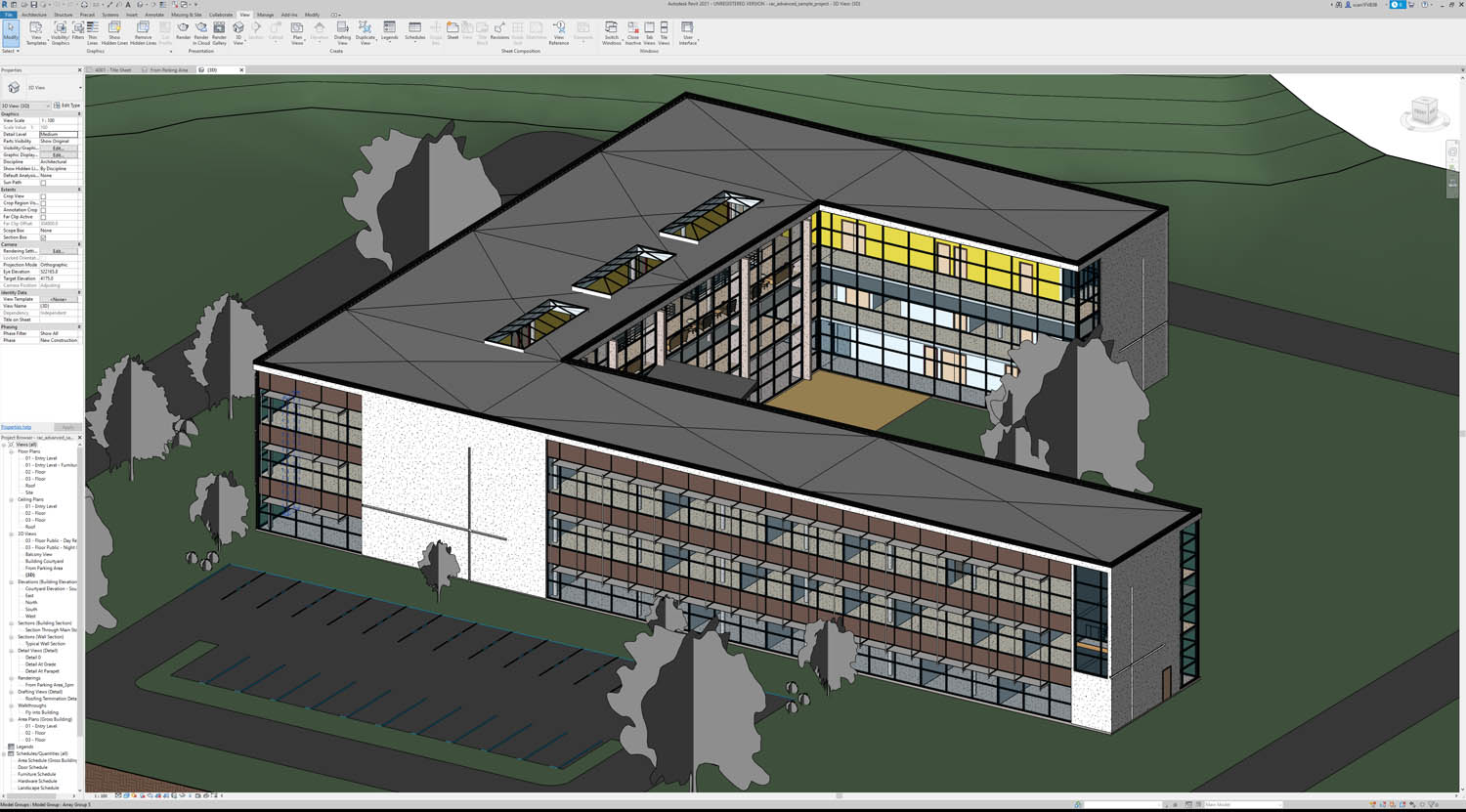
But without all of those enabled – especially with the viewport set to orthographic – the performance gains were minimal, or there were none at all. We would be interested to learn how the system works with significantly larger Revit models.
It’s also worth pointing out here that most CAD applications already have a built-in feature to help improve viewport performance when working with large models. In Revit, the ‘simplify display during view navigation’ feature (which is switched on by default) suspends certain graphics effects and temporarily removes some objects when the model is in motion.
Radeon Pro Viewport Boost gives the best performance boost when this feature is enabled, so you are getting a lower res representation of a model that has already been simplified.
Of course, Revit like many CAD/BIM applications, is renowned for being CPU limited so it’s hardly surprising we found reduced benefits for Radeon Pro Viewport Boost. This is especially true for a high-end graphics card like the Radeon Pro W6800, which is complete overkill for Revit.
In CAD applications that make better use of the GPU, such as Solidworks, AMD Radeon Pro Viewport Bost could have a bigger impact in a broader set of viewing styles.
It’s also important to note that CAD applications are changing, with new graphics engines that use modern APIs like Vulkan to push more processing onto the GPU and reduce the CPU bottleneck. This includes future versions of Solidworks (Project Romulan) and Autodesk Revit (and other Autodesk applications) which will use the new One Graphics System.
Conclusion
It’s good to see AMD innovating by taking a smarter approach to GPU resource allocation. Why bother rendering pixels that most people won’t even notice when models are moving at speed?
From our tests we see a clear benefit for design viz, where applications almost always push the GPU to its limits and visual quality is of paramount importance. We’re less convinced with the broader advantages for CAD/BIM. In Revit, for example, it appears you have to use a fairly precise combination of visual settings in order to benefit, and one would also question how many people actually view models that way.
At the moment, application support is quite limited, but this will grow. We imagine AMD is working on support for Unreal Engine Editor as well as DirectX 12, which should be a big attraction for viz artists, especially those working with huge datasets that approach the substantial 32 GB memory limit of the Radeon Pro W6800.
When AMD first announced Viewport Boost it was exclusive to the Radeon Pro W6800 and W6600 GPUs. AMD has now confirmed that it will be expanding support to prior generation Radeon Pro GPUs as well. So, for those that already own an AMD GPU, this could be a great way to get more out your investment.
And it’s perhaps with less powerful GPUs like these, that users will get the biggest benefits. In all of our tests we experienced pretty good viewport performance (most well above 20 FPS) even with Viewport Boost disabled. But it’s when frame rates drop lower, and viewports become choppy, that any performance increase can make a huge difference to practical workflows and become far more important than numbers on charts.
This article is part of AEC Magazine’s 2021 workstation special report. To read the other articles and reviews in this report click on the links below.
Desktop Workstation Buyer’s Guide
Greg Corke goes back to basics with some general advice for those looking to match their machine to architecture, engineering and construction (AEC) workflows
Intel Core vs AMD Ryzen for CAD, BIM & beyond
Which is the best CPU for design-centric workflows – from CAD and BIM to reality modelling and rendering
Workstations for CAD, BIM and viz: 2021
The latest desktop workstations for CAD and BIM-centric workflows
Best lightweight workstation laptops for 2021
Ultra-portable mobile workstations to take CAD, BIM and viz on the road
Nvidia RTX A4000 / A5000 review
New pro ‘Ampere’ GPUs slice through real-time 3D, ray tracing and VR workflows
Dell UltraSharp U4021QW review
This 5K2K widescreen display gives a bit extra when it comes to screen real estate
Hybrid working for AEC firms
With many firms re-evaluating office space and working from home policies, we asked Adam Jull of IMSCAD about the role that virtual workstations can play
Scan 3XS GWP-ME A132R (AMD Ryzen 9 5000) review
This Ryzen 5000 beast from Scan excels in rendering and extreme multi-tasking
Workstation Specialists WS-184 (11th Gen Intel Core) review
This 11th Gen Intel Core workstation is ideal for CAD and BIM centric workflows
WS-1640A-PRO-G4 [Threadripper Pro] Review
It’s not for everyone, but looks ideal for applications where memory bandwidth is critical
AMD Radeon Pro W6800 review
This 32 GB beast is the first pro GPU from AMD with hardware-based ray tracing built in
The Revit Graphics Boost
New One Graphics System (OGS) will boost viewport performance and add GPU ray tracing

